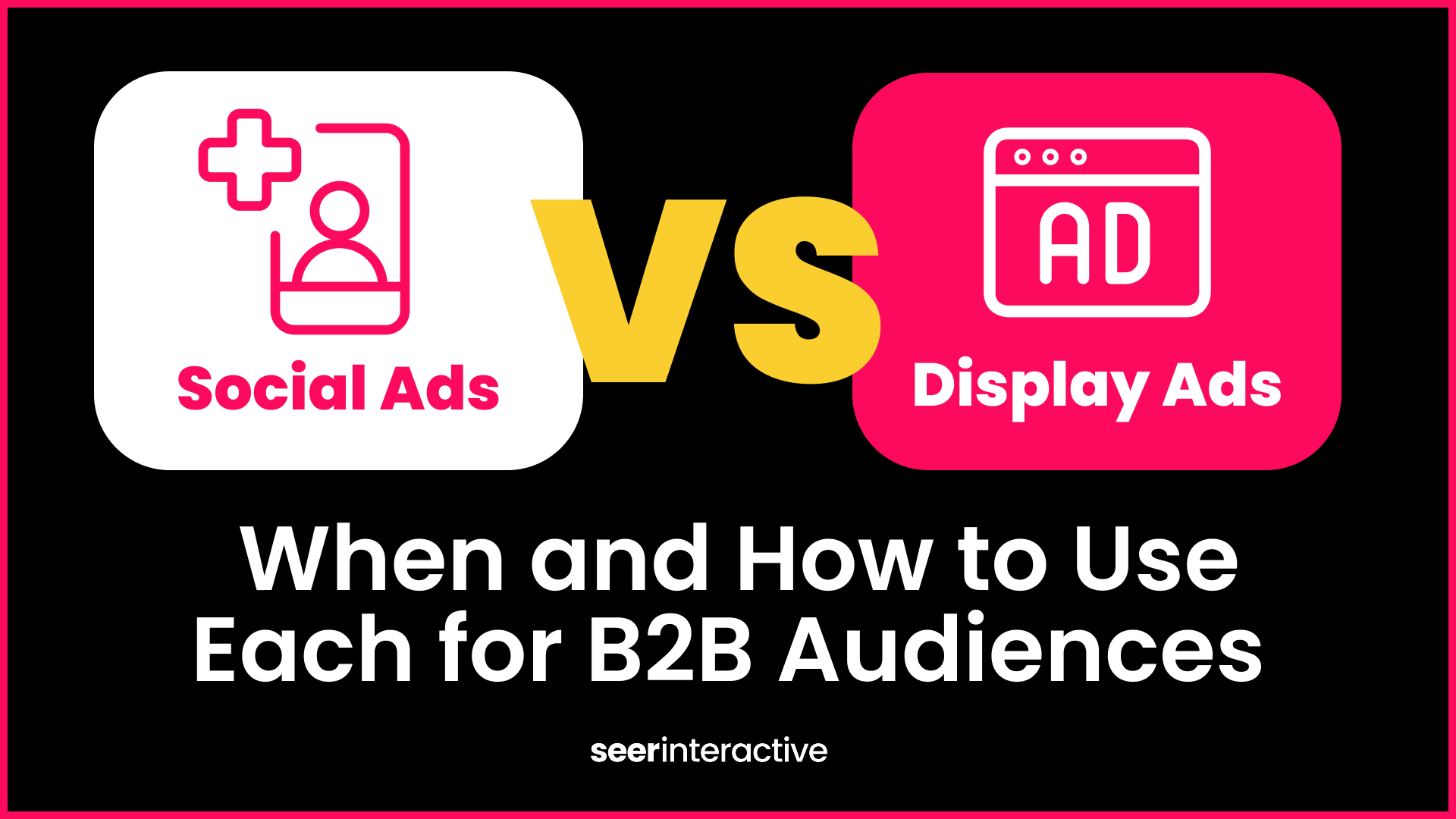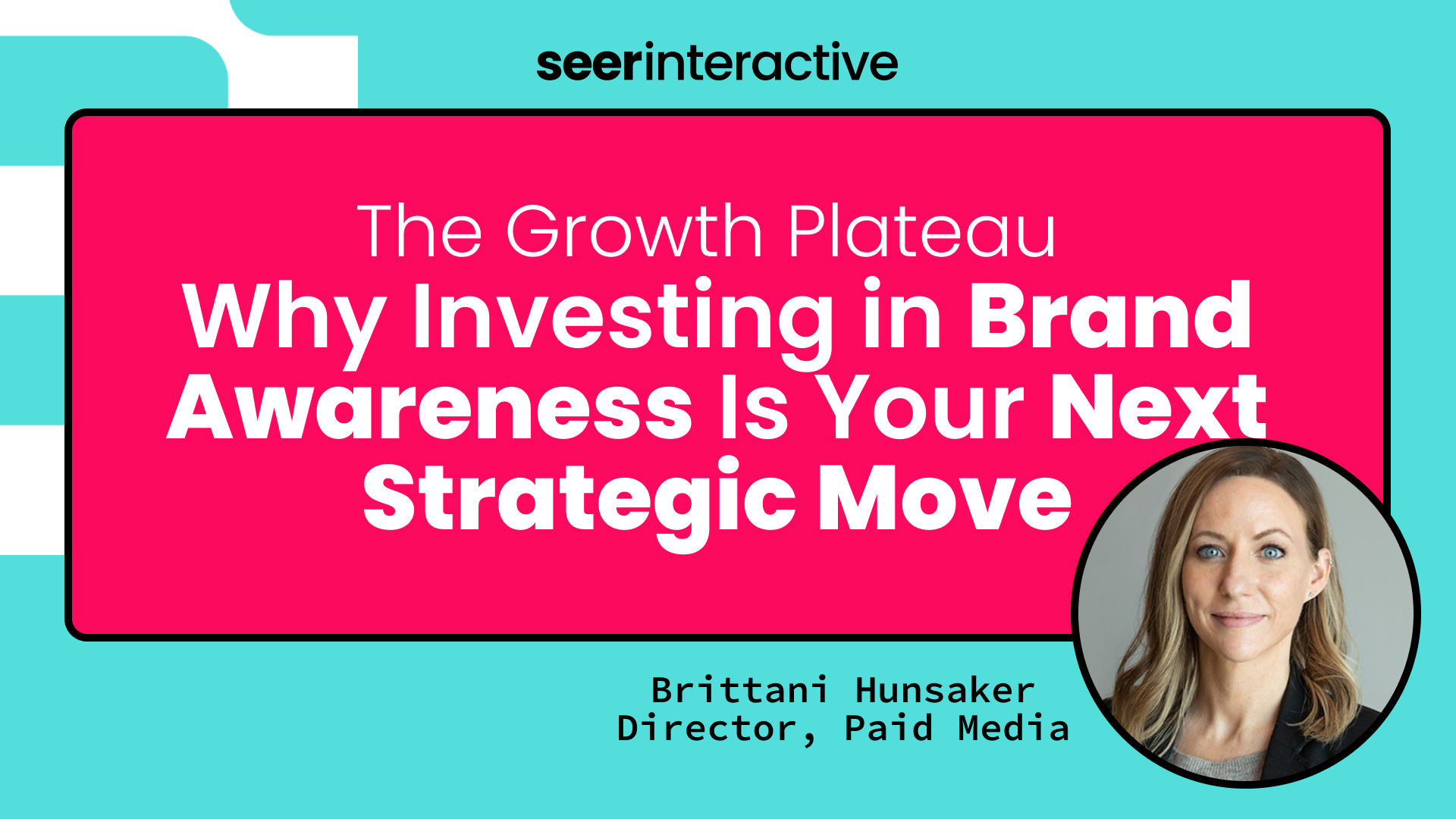B2B marketers face several significant challenges in paid media marketing. From measuring ROI to managing limited budgets and aligning marketing efforts with sales teams, B2B marketers must navigate a complex array of obstacles to achieve their goals. This blog post delves into the primary challenges faced in paid media and offers robust strategies to overcome them, ensuring your marketing efforts are both effective and efficient.
#1: Measuring ROI
Challenge:
Measuring the return on investment (ROI) for paid media campaigns can be difficult. It’s often hard to attribute sales and revenue directly to specific ads or platforms.
Solution:
Establish clear KPIs and metrics to track the performance of your marketing activities. Regularly analyze these metrics to understand what’s working and where adjustments are needed. Use analytics tools to track metrics such as lead generation, conversion rates, customer acquisition cost (CAC), and lifetime value (LTV). Create regular reports to share with stakeholders and use data-driven insights to optimize your strategy.
- Set clear goals and KPIs for each campaign.
- KPIs for Acquisition: Focus on true quality leads. Use lead scoring methods to prioritize high-potential prospects. Further qualify leads directly in the lead form.
- KPIs for Awareness & Consideration: Track site visitors, content downloads, and newsletter subscribers. These metrics help build your retargeting lists with the right audience.
- Emphasis Quality Leads. While generating leads is crucial, ensuring these leads are of high quality and have a genuine interest in the product or service is even more important. Poor-quality leads can waste resources and time.
- Tracking Methods:
- Implement UTM parameters and integrate them with your CRM to capture detailed campaign data. Share this data with your marketing team on regular intervals.
- Integrate your CRM with the ad channels directly to represent your entire lead-to-sale journey. Read more here on the benefits of CRM Integration.
- Consider A/B testing different strategies to determine which platforms yield the highest ROI. Regularly review and analyze campaign performance to adjust strategies as needed
- Set Realistic Expectations: Understand your lead-to-sale journey, including time frames and value at each stage. Use tools like a Viability Calculator to project ROI and communicate these timelines to stakeholders.

#2: Low Brand Awareness & Demand
Challenge:
B2B SaaS often have low brand awareness and/or sell a solution that their target audience is either unaware of or unaware they have a problem and that there's a solution.
Oftentimes we see the target audience is too niche to effectively target through bottom funnel efforts alone. In most cases, a full-funnel strategy is a necessary focus to feed the funnel and effectively grow.
Solution:
Find Your Audience:
Reaching and engaging the correct decision-makers within target organizations is complex.
- Identify where your target audience spends time—industry news sites, Reddit, Twitter, or LinkedIn communities.
- Use advanced targeting options provided by platforms like LinkedIn, which allows targeting based on job title, company size, and industry.
- Additionally, leveraging first-party data and creating lookalike audiences can refine targeting efforts.
- Investing in data management platforms (DMPs) can also provide deeper insights into audience behavior and preferences
Adapting to Changing Buyer Behavior
B2B buyers are increasingly conducting their own research online before engaging with sales representatives. Marketers need to adapt by providing valuable information at every stage of the buyer’s journey and engaging through digital channels.
Create Engaging Content & Overcome Ad Fatigue
- Develop content that informs, educates, and delights. Start with your brand story, then highlight features, benefits, and social proof. Use case studies, reviews, and white papers to build credibility.
- Rotate ad creatives regularly and personalize ads based on user behavior. At Seer, we’ve developed a Creative Fatigue Analysis to identify when creatives should be refreshed.
- Utilize dynamic creative optimization (DCO) to automatically generate and test multiple ad variations.
- Incorporating location-based targeting can also help keep ads relevant and fresh to specific audience segments.
- Invest in high-quality, informative content that addresses the pain points and needs of your target audience. This includes whitepapers, case studies, webinars, and blogs that establish your company as a thought leader in the industry.
Leverage Multiple Channels:
Utilize a mix of marketing channels, including email marketing, social media, search engine marketing (SEM), and account-based marketing (ABM), to reach and engage multiple decision-makers within target organizations.
Develop a multi-channel strategy that leverages the strengths of each channel. For example, use LinkedIn for targeted ads to decision-makers, email for nurturing campaigns, and webinars for deep-dive educational content.
- Generate Demand: Leverage top and middle-funnel efforts to generate demand. Utilize YouTube, video content, and downloadable resources to build awareness and trust.
- Track Keywords: Measure how demand for core brand and non-brand search keywords grows over time.
- Retargeting: Implement robust retargeting campaigns to move visitors from top and middle-funnel stages to the bottom funnel, driving conversions.
Top and middle-funnel efforts typically involve niche audience targeting methods that feed into bottom-funnel search efforts. This integrated approach ensures your bottom-funnel campaigns target a well-qualified audience.
#3: Limited Budget
Challenge:
B2B marketers often face budget limitations, which can restrict their ability to execute comprehensive marketing campaigns. Prioritizing and optimizing spend for maximum impact is a constant challenge.
B2B sales cycles are often lengthy and complex, involving multiple decision-makers and touchpoints. This requires sustained engagement and nurturing over extended periods.
Solution:
Strategic Budget Allocation:
- Initial Investment: Allocate a larger portion of the marketing budget upfront to build brand and category demand. Focus this initial investment on high-impact areas such as content creation, SEO, and paid media campaigns targeting decision-makers.
- Detailed Budget Plan: Develop a comprehensive budget plan that outlines spending across various stages of the sales cycle. Ensure that the budget covers not only initial outreach and brand awareness campaigns but also ongoing engagement and nurturing activities.
Phased Investment Approach:
- Gradual Adjustment: Plan a phased investment approach where the initial heavy investment is gradually adjusted based on performance and outcomes. This approach helps manage budget constraints while ensuring continuous engagement.
- Dynamic Reallocation: Start with a robust initial campaign to build awareness, then transition to smaller, more focused campaigns targeting leads showing high engagement. Reallocate budget dynamically based on the performance of different channels and campaigns.
Align to Sales Cycle Length:
- Investment Timeline: Typically, B2B marketers should expect to invest in marketing for at least 6 to 12 months before seeing significant returns. This period allows for building brand awareness, creating content, and nurturing leads through the sales funnel.
- Sales Cycle Influence: The length of your sales cycle should significantly influence your marketing investment timeline. B2B sales cycles are often lengthy and involve multiple decision-makers, making it crucial to align your marketing efforts with this timeline.
- Consistent Investment: For example, if your average sales cycle is 9 months, you should plan to invest consistently in marketing activities that support each stage of the buyer's journey for at least that duration. This includes awareness campaigns, lead nurturing, and conversion tactics.
#4 Aligning Marketing and Sales Teams
Challenge:
Misalignment between marketing and sales teams can lead to inefficient use of resources.
Solution:
Regular Communication and Collaboration:
- Joint Meetings: Schedule regular joint meetings to ensure both teams are aligned on goals, strategies, and updates. This helps in sharing insights and addressing any discrepancies in real-time.
- Shared KPIs: Establish shared KPIs that both marketing and sales teams are accountable for. This encourages both teams to work towards common objectives, such as lead quality, conversion rates, and revenue targets.
Integrated Tools and Data Sharing:
- Unified Platforms: Use integrated platforms that allow both teams to access and share data seamlessly. CRM systems that integrate with marketing automation tools can provide a unified view of customer interactions and journey.
- Data Transparency: Ensure that both teams have access to the same data and insights. This transparency helps in making informed decisions and developing cohesive strategies.
Collaborative Campaigns:
- Cross-Functional Teams: Create cross-functional teams that include members from both marketing and sales. This fosters collaboration and ensures that both perspectives are considered in campaign planning and execution.
- Feedback Loops: Establish feedback loops where sales can provide input on the quality of leads generated by marketing and marketing can adjust strategies based on sales feedback.
Training and Development:
- Joint Training Programs: Implement training programs that educate both teams on each other's processes and goals. This can include workshops on lead nurturing, sales tactics, and the use of marketing automation tools.
- Skill Development: Invest in skill development for both teams to ensure they are proficient in using the latest tools and techniques. Continuous learning opportunities can enhance collaboration and effectiveness.
Read more here on the benefits of aligning Sales & Marketing for holistic success.
#5 Managing Leadership Expectations
Challenge:
Convincing senior management of the value of digital marketing tools can be challenging.
Solution:
Data-Driven Reporting:
- Clear Metrics and Reports: Provide clear, data-driven reports that demonstrate the impact of marketing efforts on sales and revenue. Use dashboards that highlight key metrics such as lead generation, conversion rates, and ROI.
- Case Studies and Benchmarks: Use case studies and industry benchmarks to illustrate the potential ROI of digital marketing strategies. Presenting success stories from similar companies can help build credibility and support for your initiatives
Regular Updates and Communication:
- Frequent Updates: Regularly update senior management on campaign performance and progress towards goals. This keeps them informed and engaged, making it easier to secure ongoing support.
- Strategic Adjustments: Be prepared to adjust strategies based on feedback from leadership. Demonstrating flexibility and responsiveness can build trust and confidence in your marketing plans
Showcasing Incremental Wins:
- Highlight Quick Wins: Highlight incremental successes and quick wins to demonstrate progress. This can include increases in web traffic, lead quality, or engagement rates.
- Short-Term and Long-Term Goals: Present a mix of short-term and long-term goals to show both immediate and future benefits. This balanced approach can help in managing expectations and securing ongoing investment
Educational Initiatives:
- Executive Education: Provide educational sessions for senior management to help them understand the value and mechanics of digital marketing. This can include workshops, webinars, and one-on-one briefings.
- Industry Trends and Insights: Share insights and trends from the industry to keep leadership informed about the latest developments and competitive landscape. This helps in positioning your strategies as forward-thinking and relevant
Conclusion
By addressing these challenges with strategic planning and the right tools, B2B marketers can optimize their paid media efforts to drive better results. Continuous investment and adjustment based on performance data are key to achieving sustained success in B2B marketing. Embrace these strategies to navigate the complexities of B2B marketing and enhance your overall effectiveness.
Need help with your B2B marketing efforts? Connect with our team today!


